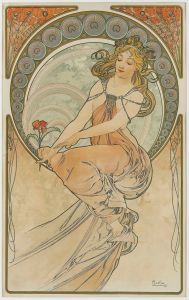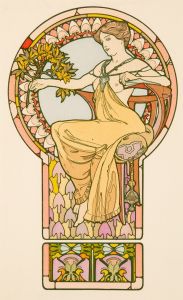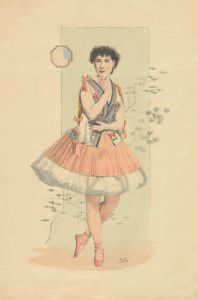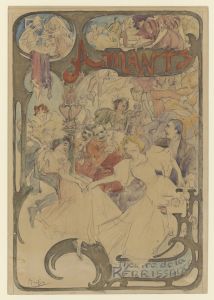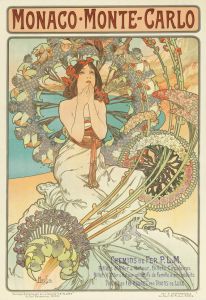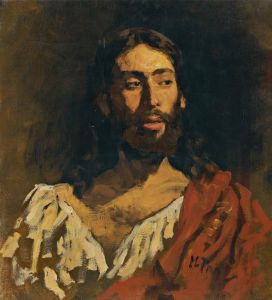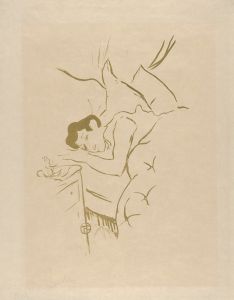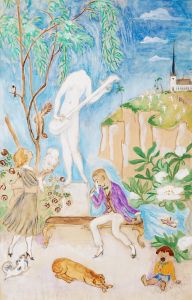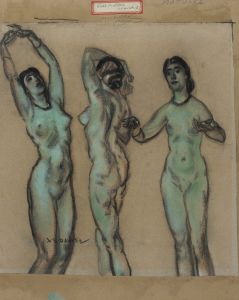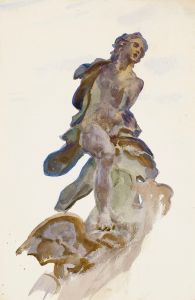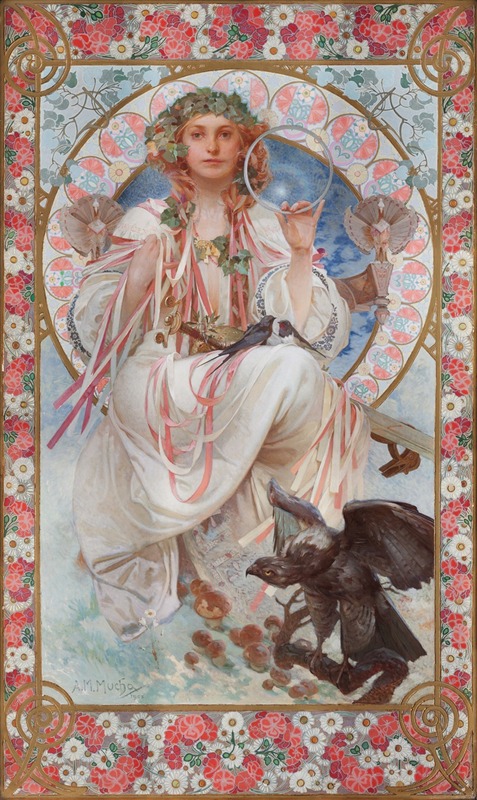
Portrait Of Josephine Crane-Bradley As Slavia
A hand-painted replica of Alphonse Mucha’s masterpiece Portrait Of Josephine Crane-Bradley As Slavia, meticulously crafted by professional artists to capture the true essence of the original. Each piece is created with museum-quality canvas and rare mineral pigments, carefully painted by experienced artists with delicate brushstrokes and rich, layered colors to perfectly recreate the texture of the original artwork. Unlike machine-printed reproductions, this hand-painted version brings the painting to life, infused with the artist’s emotions and skill in every stroke. Whether for personal collection or home decoration, it instantly elevates the artistic atmosphere of any space.
Alphonse Mucha's Portrait of Josephine Crane-Bradley as Slavia is a notable work created in 1908 by the renowned Czech artist Alphonse Mucha. This painting was commissioned by Charles R. Crane, an American industrialist and philanthropist, as a wedding gift for his daughter, Josephine Crane-Bradley. Mucha, who was widely recognized for his contributions to the Art Nouveau movement, was chosen for this project due to his reputation as a master of decorative and symbolic art.
The portrait depicts Josephine Crane-Bradley in the guise of "Slavia," a personification of the Slavic nations, which was a recurring theme in Mucha's work. Mucha was deeply invested in the cultural and political identity of the Slavic peoples, and this painting reflects his dedication to celebrating Slavic heritage. In the artwork, Josephine is portrayed wearing traditional Slavic-inspired attire, adorned with intricate patterns and symbolic motifs. Her serene expression and dignified pose convey a sense of grace and strength, aligning with the idealized representation of Slavia as a unifying and noble figure.
The painting is executed in Mucha's signature style, characterized by its harmonious composition, delicate color palette, and meticulous attention to detail. The background features ornamental elements and floral designs, which are hallmarks of Mucha's decorative approach. These elements not only enhance the aesthetic appeal of the work but also underscore its symbolic significance.
Portrait of Josephine Crane-Bradley as Slavia is an example of Mucha's ability to blend portraiture with allegory, creating a piece that is both personal and universal. While it serves as a tribute to Josephine, it also embodies Mucha's broader artistic and cultural vision. The painting is part of Mucha's later works, which often moved beyond commercial art to explore themes of national identity and cultural pride.
Today, the painting is housed in the National Gallery in Prague, Czech Republic. It remains an important example of Mucha's artistic legacy and his commitment to celebrating Slavic culture through his art.






